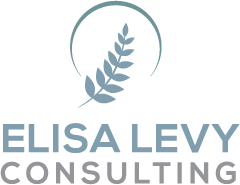Part IV: How to Change When It’s Not Forced Upon You
The first column in this series differentiated between active and passive change. Passive means the change over which we have no control (the business we work for is sold; we get a new boss, our partner decides that the relationship needs to end, etc). Active change is the one that we initiate. There are no external events forcing us to change, but we recognize the need for it. We realize we are tired of being unhealthy; we have been living too long in an unhappy relationship; we dread going to work every day.
While most of us would prefer to have control over the happenings in our life, active change is far more difficult, as is requires that we take the initiative, step outside of our comfort zone, and experience loss or pain in the process. Why do we then do it? We don’t do it for happiness; we usually do it out of desperation. A wise author and professor from Ohio University, Barry Roth, once wrote “people don’t change until they have to.” While that may not always be the case, most of us can identify with that statement. Once we break free, we look back and knock ourselves on the heads for not doing it sooner.
The question when it comes to change is how do we know when it’s time to make it? (Should we really wait until we are so miserable that we have no other choice?) It may be human nature to wait, and yet the time is something we don’t get back. It’s easy to avoid thinking about what needs to change, and instead, just get caught up in the daily minutia of life. Suddenly, we realize, however, that we have been unhappy for way too long.
None of us want to live like that. At the end of our lives we won’t be wishing we stuck it out longer when we were unhappy. We will wish we took action and made every day count. So, how do we engage in this process? More importantly, what do we do when we finally figure out that we need to change? There are a few tasks to incorporate into your life regularly that will help you with this.
First, take time at least twice a year to evaluate. If you don’t look inward, you won’t find what you need. Birthdays and the start of a new year are obvious times to do this. Just sit down for 30 minutes and do the following self-inventory:
- What in my life brings me the most joy right now?
- What is the hardest part of my life right now?
- If I could change anything, what would it be and how would it look?
- I would be happier if…
- Given what I have written, what most needs to change in my life?
Once you have an answer to these very specific questions, you must make a plan of action. Refer back to the last column (number 3) in this series for steps to do this exercise. The three steps are: 1) taking stock with a list for “concerns/fears” and another with “solutions,” 2) brainstorm solutions, and 3) make an action plan with a corresponding timeline.
Studies time and again show that the more specific you are about your goals, the more likely you are to achieve them. Get clear on where you are and what you need, and the courage to change will come. The point of change is that we don’t want to wait until we are forced. Life is way too short for that. We want to make the most of it, and be proactive in getting what we want and need. There is nothing to lose by trying the self-inventory, and much to gain. Do it now, or set a day and time to do it. It can only lead to greater good.


